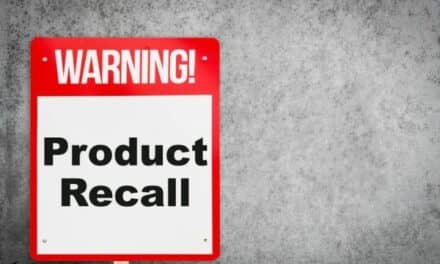Best practices for HTM professionals
By Mike Murray and Arthur Zenian
As part of your overall biomedical equipment management strategy, you should maintain a product recall process that allows your organization to react quickly and decisively to a recall situation, thus preventing any impact to patient health or safety. For most product recalls, your primary source of information is likely the U.S. FDA, with the FDA posting information on their website when a manufacturer notifies them of a corrective or eliminatory action.
Each recall notice includes information on the recalled product, the intended device use, the reason for the recall, who may be affected, what to do, contact information, and the date the recall was initiated. Additionally, the FDA will publish the manufacturer’s press releases on their web site for each product recall.
Types of Recalls
When assessing the urgency of a product recall, it’s important to evaluate the level of impact on patient health. Fortuantely, the FDA publishes guidelines on each class of recall as noted below. The information is then added to the FDA’s weekly report once the type of recall has been determined.
Here are the three categories of products recalls:
- Class I: A situation where there is a reasonable chance that a product will cause serious health problems or death
- Class II: A situation where a product may cause a temporary or reversible health problem or where there is a slight chance that it will cause serious health problems or death
- Class III: A situation where a product is not likely to cause any health problem or injury
Building a Strong Recall Process
The following best practices can help you build a strong product recall process.
1. Develop a recall process flowchart that identifies the proper actions, relevant sources of information, and responsible individuals. Note: A recall flowchart is a critical tool that defines the necessary action steps and becomes a blueprint for your organization to follow. Here is some key information to include:
- Notification process: How recall information is communicated and to whom
- Location process: How recalled equipment is identified and located
- Remediation process: Required disposition of recalled equipment and related records management
Also, be sure to include action items and communication protocols for all relevant departments including administration, purchasing, nursing, engineering, and facilities, as necessary.
2. Use multiple sources of information. In addition to the weekly FDA report, it’s beneficial to subscribe to a third-party automated recall monitoring service, such as ECRI Institute’s Alerts Tracker. This service provides automatic distribution of product safety data across your organization.
Manufacturers’ websites are another valuable resource for recall information, and may often be the first source of actionable information. Still, whatever resources you choose, be sure to have redundancy built into your information network.
3. Don’t overlook rental equipment or used/reconditioned equipment. Rental equipment can be easily overlooked during a recall as an inventory record may not exist in your computerized maintenance management system (CMMS). By tracking rental equipment within your CMMS, however, you will be able to quickly identify and locate recalled items. Don’t rely solely on the rental company to provide this information.
This strategy applies to used and reconditioned equipment, as well. After all, the manufacturer may not know who the purchaser or owner is for the recalled equipment. That’s why you need to have redundancy built into your data.
4. Build recall handling into your CMMS workflow. For maximum visibility, consider building recall handling into your CMMS workflow. Once a recall alert is received and the equipment is located, open a work order in the CMMS using a “recall” action type to highlight that the recall process is currently being followed.
5. Conduct mock recalls. Mock recalls give your staff the ability to showcase their understanding of your recall and communications process before it’s put to the test during an actual recall. Remember: The most important part of the mock recall is the debriefing meeting where results are assessed. Some key questions to ask include:
- “Did the staff identify the existence of all recalled equipment in your CMMS?”
- “Was the recalled equipment located and removed within your prescribed window?”
- “Did the staff follow the proper process regarding equipment tagging?”
- “Was the time elapsed from notification to removal and tagging within your performance criteria?”
Summary
Medical device recalls will continue to be part of modern healthcare management. The practices mentioned above can help your organization improve the efficiency and effectiveness of your recall process, reduce risk and liability, and provide a safe environment for patients and hospital staff.
Mike Murray and Arthur Zenian are COO and CEO of Burbank, Calif.-based enBio Corp., respectively. For more information, contact 24×7 Magazine chief editor Keri Forsythe-Stephens at [email protected].




